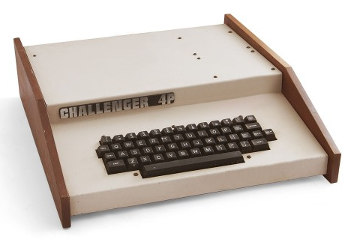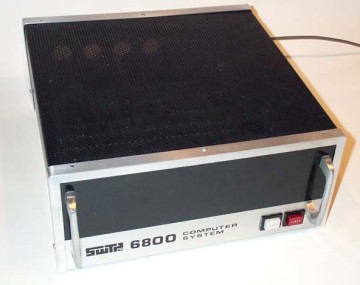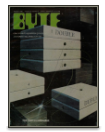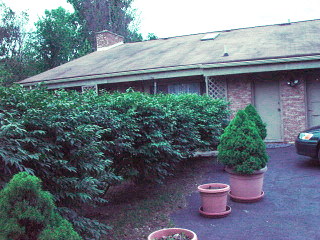
(Copied from old typewritten and handwritten notes from 1984, formatted to HTML, with minor editorial changes and typo fixing.)
Long ago, as a high school student at Walled Lake Western, I wrote a system called "MGI" which used something like monobyte code. It was a toy system to fit in a 1K microcomputer with ADCs for driving an oscilloscope in XY mode, to make patterns according to mathematical formulas. I also wrote "Radish", a compiler to produce object code for MGI, running on a SWTPC 6800. IIRC, this had 8K or 16K RAM.

(Irrelevant note: you can see another oscilloscope XY graphics project I did, the Stereoscopic 8x8x8 Display)
In the summer of 1979, I made enough money from a part time job to buy an Ohio Scientific Challenger IP.

The August issue of Byte Magazine always covered some programming language in detail. For 1980, when I was Oakland University, it was about Forth.
This caught my imagination. When I acquired the OSC, in the of 1980 I wrote the first sketchy NCS project. It
turned out a big mess. I wasn't good at organizing complexity or making adequate use of indirect addressing.

I worked on many other projects. Eventually in May of 1982 the inspiration came to me to write a Forth-like system,
following mostly the standard Forth language. This was interrupted by adventures in the summer of 1982. In the fall,
I wrote an assembler which I called ASMR9B82. I dabbled again with NCS into the next year.
By March or April of 1983, I had more or less clearly defined the language in its source form, and called it "Darwil". Busy with job-hunting, I put NCS aside. Late in the summer, I had an urge to write highly optimized machine code. I called this version of the language and system infrastructure "OSRROM", for Operating System ROM, or Ohio Scientific ROM. At this time I bought an EPROM chip and determined to make a new software system. [note: what I called an operating system back then, might be better thought of as a BIOS.]
As I tried cramming in many features into 2K, and removing the less essential ones, re-iterating the whole design, I needed one fixed design in full detail involving only the barest essentials, not to implement but to have as a reference point to compare further changes with. This was called "Magellan". Later I had a vision of replacing the 8K BASIC ROM along with the 2K system ROM, to use that larger space for a bigger NCS system. This was Project Galaxy. Magellan was just a part of that, like the Magellanic Clouds are part of the Milky Way (or close neighbors if not actually a part.)
When I began working at Ovonic Thermoelectric, I was too busy with the job to work on Galaxy. After about a month I had some free time to do a bit further work.
Magellan was never burned to ROM or installed. Due to a tabletop mishap, part of OSC was electrically damaged, ruining one RAM chip so that only 7K of the original 8K RAM was usable. In August 1984, when I started grad school at Indiana U, I replaced the spoiled RAM chip and other damaged parts, except the ROM chips. Not long after, I bought a Commodore 16, which had more memory, better graphics (just having graphics of any kind!), lighter weight, a more powerful BASIC (also from Microsoft) and better methods of saving and restoring programs. I could do nuclear matter calculations on this thing!
There wasn't any point spending effort on making a new language, and the OSC became a dust catcher. After grad school, I moved to Michigan. One day I looked at the old OS Challenger in a box of stuff, realized I wasn't ever going to do anything with it, so chucked it in the trash.
